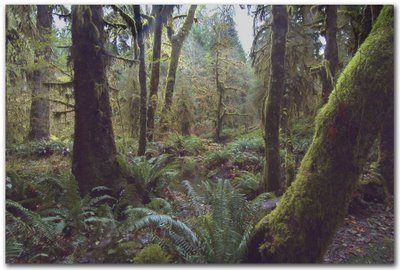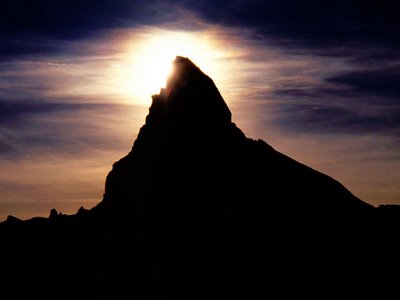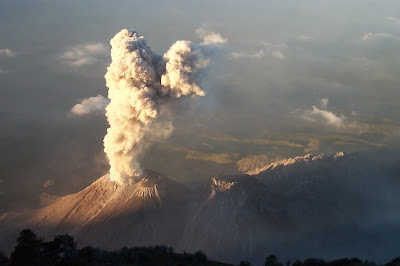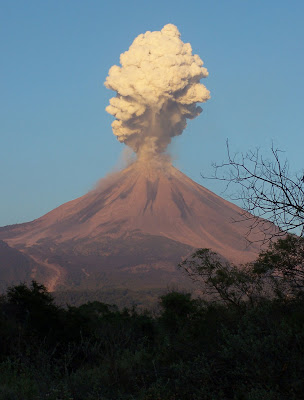
|
|
|||||||
| عکسهای جالب و دیدنی در این بخش فقط عکس های جالب و دیدنی قرار خواهند گرفت و لزوما عکسهای خنده داری نیستند |
 |
|
|
ابزارهای موضوع | نحوه نمایش |
|
#21
|
||||
|
||||
|
__________________
|
| جای تبلیغات شما اینجا خالیست با ما تماس بگیرید | |
|
|
|
|
#22
|
||||
|
||||
|
__________________
|
|
#23
|
||||
|
||||
|
__________________
|
|
#24
|
||||
|
||||
|
__________________
|
|
#25
|
||||
|
||||

__________________
|
|
#26
|
||||
|
||||
|
__________________
|
|
#27
|
||||
|
||||
 تهران (پارک ملت)
__________________
|
|
#28
|
||||
|
||||
        In one of the most incredible tornado photographs ever taken, monstrous double tornadoes rip through Midway, Indiana, between Goshen and Elkhart on Palm Sunday, April 11, 1965, at 6:32pm. These two massive funnels were rotating around each other, and produced F4 damage. Photo courtesy Paul Huffman, who worked for the Elkhart Truth at the time.  Tornado love   This photo is really special. Tornado and lightning in the same time. Great. 
__________________
مرا سر نهان گر شود زير سنگ -- از آن به كه نامم بر آيد به ننگ به نام نكو گر بميــرم رواست -- مرا نام بايد كه تن مرگ راست |
|
#29
|
||||
|
||||
 It was first climbed on 13 August 1859 by the Englishman Leslie Stephen, supported by Anton Siegen, Johann Siegen and Joseph Ebener.   Sajama is the highest mountain in Bolivia. It is an isolated, symmetrical volcanic cone that rises near the border of Chile. It rises in a cluster of easily climbed volcanoes. Sajama, however, is more challenging than its neighbors due to its higher elevation and steep ice cap. The Bolivian eastern side of the mountain receives much more rainfall than the Chilean western side, and is correspondingly more lush. The villages of Tameripi, Sajama, and Lagunas lie at the north, west, and south bases of the mountain respectively. The summit is a direct ascent from either of these villages. And here are some other mountain peeks, but the only thing that I know about them is that this first one is from Nepal. If You recognize some of them please e-mail me or post a comment.
__________________
مرا سر نهان گر شود زير سنگ -- از آن به كه نامم بر آيد به ننگ به نام نكو گر بميــرم رواست -- مرا نام بايد كه تن مرگ راست |
|
#30
|
||||
|
||||
 The Roman name for the island Vulcano has contributed the word for volcano in most modern European languages.  Volcanoes are generally found where tectonic plates pull apart or are coming together. A mid-oceanic ridge, like the Mid-Atlantic Ridge, has examples of volcanoes caused by "divergent tectonic plates" pulling apart; the Pacific Ring of Fire has examples of volcanoes caused by "convergent tectonic plates" coming together. By contrast, volcanoes are usually not created where two tectonic plates slide past one another. Volcanoes can also form where there is stretching of the Earth's crust and where the crust grows thin (called "non-hotspot intraplate volcanism"), such as in the African Rift Valley, the European Rhine Graben with its Eifel volcanoes, the Wells Gray-Clearwater Volcanic Field and the Rio Grande Rift in North America. Finally, volcanoes can be caused by "mantle plumes", so-called "hotspots"; these hotspots can occur far from plate boundaries, such as the Hawaiian Islands. Interestingly, hotspot volcanoes are also found elsewhere in the solar system, especially on rocky planets and moons.  The most common perception of a volcano is of a conical mountain, spewing lava and poisonous gases from a crater in its top. This describes just one of many types of volcano and the features of volcanoes are much more complicated. The structure and behavior of volcanoes depends on a number of factors. Some volcanoes have rugged peaks formed by lava domes rather than a summit crater, whereas others present landscape features such as massive plateaus. Vents that issue volcanic material (lava, which is what magma is called once it has broken the surface, and ash) and gases (mainly steam and magmatic gases) can be located anywhere on the landform. Other types of volcanoes include cryovolcanos (or ice volcanoes), particularly on some moons of Jupiter, Saturn and Neptune; and mud volcanoes, which are formations often not associated with known magmatic activity. Active mud volcanoes tend to involve temperatures much lower than those of igneous volcanoes, except when a mud volcano is actually a vent of an igneous volcano. Two types of lava are named according to the surface texture: 'A'a (pronounced IPA [?a?a]) and pāhoehoe (pronounced [paːhoeːhoeː]), both words having Hawaiian origins. 'A'a is characterized by a rough, clinkery surface and is what most viscous and hot lava flows look like. However, even basaltic or mafic flows can be erupted as 'a'a flows, particularly if the eruption rate is high and the slope is steep. Pāhoehoe is characterized by its smooth and often ropey or wrinkly surface and is generally formed from more fluid lava flows. Usually, only mafic flows will erupt as pāhoehoe, since they often erupt at higher temperatures or have the proper chemical make-up to allow them to flow at a higher fluidity.  Lava composition Another way of classifying volcanoes is by the composition of material erupted (lava), since this affects the shape of the volcano. Lava can be broadly classified into 4 different compositions (Cas & Wright, 1987): - If the erupted magma contains a high percentage (>63%) of silica, the lava is called felsic. -- Felsic lavas (or rhyolites) tend to be highly viscous (not very fluid) and are erupted as domes or short, stubby flows. Viscous lavas tend to form stratovolcanoes or lava domes. Lassen Peak in California is an example of a volcano formed from felsic lava and is actually a large lava dome. -- Because siliceous magmas are so viscous, they tend to trap volatiles (gases) that are present, which cause the magma to erupt catastrophically, eventually forming stratovolcanoes. Pyroclastic flows (ignimbrites) are highly hazardous products of such volcanoes, since they are composed of molten volcanic ash too heavy to go up into the atmosphere, so they hug the volcano's slopes and travel far from their vents during large eruptions. Temperatures as high as 1,200 °C are known to occur in pyroclastic flows, which will incinerate everything flammable in their path and thick layers of hot pyroclastic flow deposits can be laid down, often up to many meters thick. Alaska's Valley of Ten Thousand Smokes, formed by the eruption of Novarupta near Katmai in 1912, is an example of a thick pyroclastic flow or ignimbrite deposit. Volcanic ash that is light enough to be erupted high into the Earth's atmosphere may travel many kilometres before it falls back to ground as a tuff. - If the erupted magma contains 52-63% silica, the lava is of intermediate composition. -- These "andesitic" volcanoes generally only occur above subduction zones (e.g. Mount Merapi in Indonesia). - If the erupted magma contains <52%>45% silica, the lava is called mafic (because it contains higher percentages of magnesium (Mg) and iron (Fe)) or basaltic. These lavas are usually much less viscous than rhyolitic lavas, depending on their eruption temperature; they also tend to be hotter than felsic lavas. Mafic lavas occur in a wide range of settings: -- At mid-ocean ridges, where two oceanic plates are pulling apart, basaltic lava erupts as pillows to fill the gap; -- Shield volcanoes (e.g. the Hawaiian Islands, including Mauna Loa and Kilauea), on both oceanic and continental crust; -- As continental flood basalts. - Some erupted magmas contain <=45% silica and produce lava called ultramafic. Ultramafic flows, also known as komatiites, are very rare; indeed, very few have been erupted at the Earth's surface since the Proterozoic, when the planet's heat flow was higher. They are (or were) the hottest lavas, and probably more fluid than common mafic lavas.  A popular way of classifying magmatic volcanoes goes by their frequency of eruption, with those that erupt regularly called active, those that have erupted in historical times but are now quiet called dormant, and those that have not erupted in historical times called extinct. However, these popular classifications—extinct in particular—are practically meaningless to scientists. They use classifications which refer to a particular volcano's formative and eruptive processes and resulting shapes, which was explained above. There is no real consensus among volcanologists on how to define an "active" volcano. The lifespan of a volcano can vary from months to several million years, making such a distinction sometimes meaningless when compared to the lifespans of humans or even civilizations. For example, many of Earth's volcanoes have erupted dozens of times in the past few thousand years but are not currently showing signs of eruption. Given the long lifespan of such volcanoes, they are very active. By our lifespans, however, they are not. Complicating the definition are volcanoes that become restless (producing earthquakes, venting gasses, or other non-eruptive activities) but do not actually erupt.  Scientists usually consider a volcano active if it is currently erupting or showing signs of unrest, such as unusual earthquake activity or significant new gas emissions. Many scientists also consider a volcano active if it has erupted in historic time. It is important to note that the span of recorded history differs from region to region; in the Mediterranean, recorded history reaches back more than 3,000 years but in the Pacific Northwest of the United States, it reaches back less than 300 years, and in Hawaii, little more than 200 years. The Smithsonian Global Volcanism Program's definition of 'active' is having erupted within the last 10,000 years. Dormant volcanoes are those that are not currently active (as defined above), but could become restless or erupt again. Confusion however, can arise because many volcanoes which scientists consider to be active are referred to as dormant by laypersons or in the media. Extinct volcanoes are those that scientists consider unlikely to erupt again. Whether a volcano is truly extinct is often difficult to determine. Since "supervolcano" calderas can have eruptive lifespans sometimes measured in millions of years, a caldera that has not produced an eruption in tens of thousands of years is likely to be considered dormant instead of extinct. For example, the Yellowstone Caldera in Yellowstone National Park is at least 2 million years old and hasn't erupted violently for approximately 640,000 years, although there has been some minor activity relatively recently, with hydrothermal eruptions less than 10,000 years ago and lava flows about 70,000 years ago. For this reason, scientists do not consider the Yellowstone Caldera extinct. In fact, because the caldera has frequent earthquakes, a very active geothermal system (i.e., the entirety of the geothermal activity found in Yellowstone National Park), and rapid rates of ground uplift, many scientists consider it to be an active volcano. 
__________________
مرا سر نهان گر شود زير سنگ -- از آن به كه نامم بر آيد به ننگ به نام نكو گر بميــرم رواست -- مرا نام بايد كه تن مرگ راست |
 |
| کاربران در حال دیدن موضوع: 1 نفر (0 عضو و 1 مهمان) | |
|
|
اکنون ساعت 08:36 PM برپایه ساعت جهانی (GMT - گرینویچ) +3.5 می باشد.











































 حالت خطی
حالت خطی

